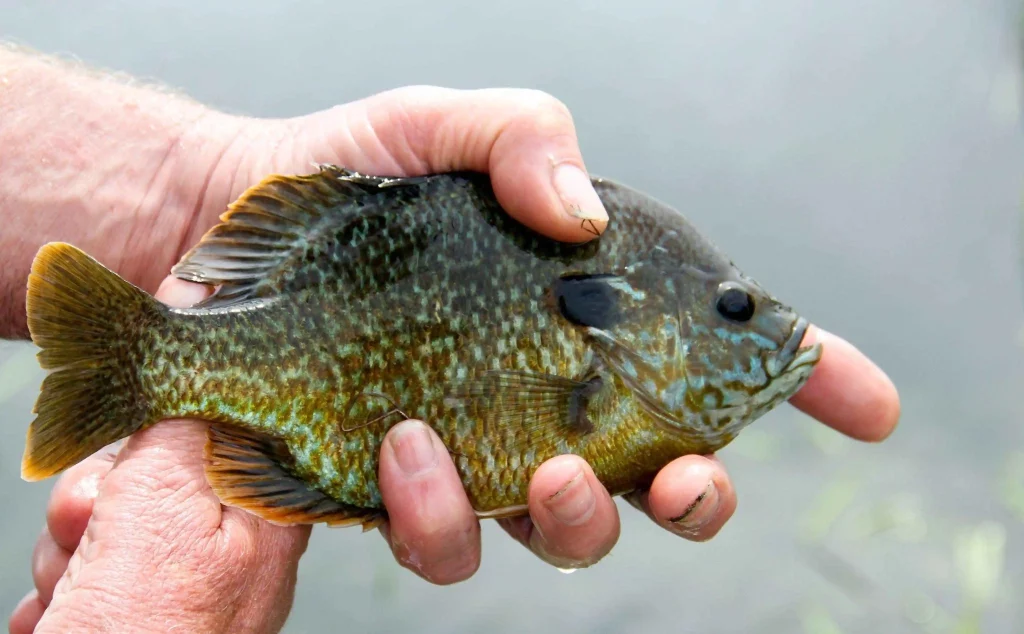How To Setup a Best Bluegill Rig (1:Easy Fishing Rigs For Bluegill)
Bluegill Rig: Bluegill fishing may seem like a waste of time to a seasoned fisherman. After all, most anglers see them as bothersome pests. They take your bait when you’re attempting to catch monster cats, and they divert you from your efforts to catch bass with your expensive crankbaits.
Contents
Table of Contents

However, they are more than just a minor nuisance. Many in the fishing world consider them among the finest game fish available. I count as one of them. Bluegill are large, hardy fish that are abundant. So, let’s begin with the fundamentals and then go on to the bluegill fishing setups that I suggest.
You’ll need to know how to rig for bluegill if that’s a species you’re interested in catching.
Here are some of the greatest fishing bluegill rigs I’ve used, along with instructions for rigging them on your rod and reel (or cane pole, if you prefer).
How To Setup a Bluegill Rig
Here are two different bluegill fishing rig setups, one using a standard rod and reel and the other using a cane pole. This is because bait and lure fishing for bluegill elicits quite different responses from the fish.
Bait Rig
You probably learned to catch bluegill with this setup. Put a worm or a piece of corn on a J-hook and suspend it below a sinker and bobber.
Due to their insatiable appetites, bluegill won’t keep you waiting long. Although this is the easiest technique for bluegill rigs, most specialists will use a more complex approach.
I suggest a very light rod and reel for this bluegill rig. Many anglers already have rods and reels, and while fishing for bluegill, you may fool them into thinking you have a bass on the end of your line by using ultralight tackle. There’s potential for a great time.
Bluegill are excellent catfish bait, and a cane pole is all you need to capture them. I suggest a B&M Black Widow. They’re cheap, effective, and last a long time. If you’ve never fished with a cane pole before, don’t worry; I’ve got you covered with a comprehensive guide.
A cane pole is ideal for capturing bait fish like bluegill since you can just aim it toward the sky and pull the fish out. They weigh very little and may be removed from the water without risking damage to your pole.
If you use this method, the fish will swing into your hands after you set the hook. Because you won’t have to waste time battling the fish, you’ll be able to cast again much sooner in the hopes of catching another bluegill.
Lure Rig
Expert anglers know that lures are the most effective method for catching bluegill. The common misconception that bluegill doesn’t respond to lures couldn’t be more wrong. I’ve caught so many bluegills on grubs that are just an inch long that I have no idea how many there are.
However, employing lures might be tough for fishers. Deceptive rod motions are necessary to entice a bite from a fish. They don’t just swim up to the bait and devour it.
You can have fantastic success with a cane pole, and certain trout flies like the copper john, but an ultra-light rod and reel combination is ideal for this method.
Lure fishing for bluegill is quite similar to bass lure fishing. Finding the bluegill’s preferred pattern of motion is all that’s required. BeetleSpins, one-inch grubs, and tiny inline spinners are what I’d go for. I’ve had the best luck with those inexpensive lures while fishing for bluegill.
Tips For Setting Up Your Bluegill Fishing Rig
1. Use Light Fishing Line
Due to the small size of the typical bluegill, lightweight lures will be necessary for successful fishing. Casting little bluegill lures with regular bass fishing lines will be very difficult. Two- or four-pound line is what you should use.
2. Use An Ultra-light Rod
Even with a medium or heavy rod, you won’t feel the fish’s weaker bites and may nearly drag it out of the water. That’s not cool, and it’s rather disturbing, too. Professional bluegill fishermen utilise an ultralight rod.
3. Learn To Read The Water
If you know how to read the water correctly, you can find bluegill by sight alone. Search for unwanted visitors, like weeds and insects. Bluegills frequent certain areas since it’s there that they can get food and cover. If you can really locate the bluegill itself, you’ll have an even easier time catching it. When sight fishing, a quality pair of polarised sunglasses is an invaluable tool.
4. Don’t Set The Hook Hard
The mouths of bluegills are quite narrow. You can tear the hook straight through their lip if you pull the rod like a madman. That’s inhumane, and you’ll also miss out on a great fishing opportunity. The hook may be set with a short twitch of the rod.
5. Use Small Hooks
The bluegill has a peculiar body structure. They have a tiny stature and a mouth that is awkwardly close to their face. It’s a recipe for disaster to use a long hook. If you try to catch a bluegill with a barbed hook, it will probably go through its head instead of its lip. You may eat the fish, but it won’t be cleaned until you bring it back to your house.



